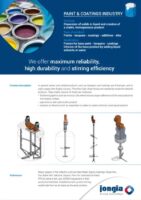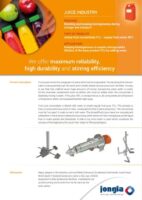Medium Duty Bottom Entry Agitators
Types: JRWB
Medium duty bottom entry agitators and mixers are suitable for applications like vegetable oil storage, dairy products and juice storage.
These applications are characterized by:
- Mixing applications where higher forces are required
- Larger tank volumes up to approx. 100 m3
- Viscosities range up to approx. 5000 cP
- Pressurized tanks (max. 16 bar g)
- Temperatures from -20 °C to 170 °C
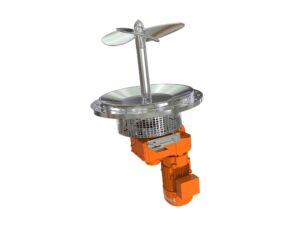
| Medium Duty Bottom Entry | |
|---|---|
| Motor power | 0,75 kW - 11 kW |
| Materials | Stainless steel 304, 316 L, Duplex (Super), Hastelloy C4 or C2000, Titanium Grade 2 or 7 |
| Coatings | C3, C4, C5 of C5M |
| Surface wetted parts | Ground until Ra < 0,4 µm, handpolished till <0,2 μm or electropolished |
| Explosion proof (ATEX) | Ex zone 0, 1 or 2 for gas, 21 or 22 for dust or Non-Ex version |
| Accessories | Direct or gear driven (all brands), all kinds of sealing systems, adapted flanges to vessel, welded or bolted versions |
JRWB mixers
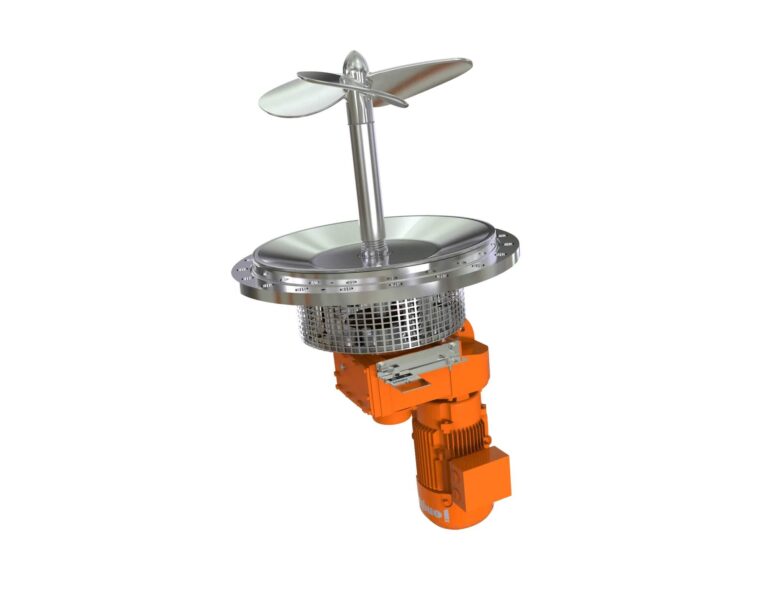
Jongia’s type JRWB is especially suitable for mounting in the vessel bottom. The mixer is provided with a gearbox to have the correct ratio between propeller diameter and shaft speed to achieve the best process result. Mounting is easy thanks to the flange construction. The mixer is, depending on the medium, provided with a single or double mechanical seal with a seal liquid system. The JRWB mixer is suitable for applications with low to medium viscosities.
This design of mixer is suitable for mixing of different liquids and keeping a substance homogeneous.
Applications Medium Duty Top Entry Mixer – JRWB
Frequently Asked Questions
What types of applications are suitable for the JRWB agitators?
The JRWB agitators are ideal for mixing applications such as vegetable oil storage, dairy products, and juice storage. These applications require higher forces and can handle larger tank volumes, making them effective for medium-duty tasks.
What is the viscosity range for the JRWB mixers?
The JRWB mixers are designed to cater to viscosities up to approximately 5000 cP. This allows them to effectively mix a variety of different liquids and maintain homogeneity in the substances being processed.
What materials are the JRWB agitators made from?
JRWB agitators are constructed with high-quality materials, including stainless steel 304, 316 L, Duplex, Hastelloy C4 or C2000, and Titanium Grade 2 or 7, ensuring durability and performance in various applications.
What are the operating temperature limits for the JRWB mixers?
The JRWB mixers can operate within a temperature range of -20 °C to 170 °C. This wide temperature tolerance makes them versatile for different industrial applications.
Are the JRWB agitators explosion-proof?
Yes, the JRWB agitators can be explosion-proof, designed for Ex zones 0, 1, or 2 for gas, and zones 21 or 22 for dust. There is also a non-Ex version available, providing safety for various environments.
Contact our specialized team for all your questions

Tom Pruymboom
Sales Director
Area Worldwide

Bart Brouwer
Area Sales Manager
Area Worldwide
Related Articles
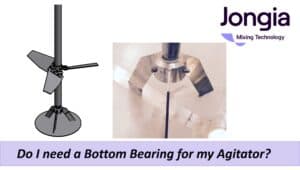
Do I need a Bottom Bearing for my agitator?
Do I need a Bottom Bearing? The installation of a bottom bearing is not mandatory. While it offers certain advantages, there are also drawbacks to consider. It is important to note that the bottom bearing functions more as a displacement
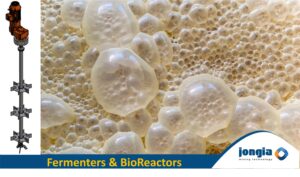
Fermentation & Bioreactor Mixing Process
Bioreactors and Fermenters are culture systems to produce cells or organisms. They are used in various applications, including basic research and development, and the manufacturing of biopharmaceuticals, food and food additives, chemicals, and other products. A broad range of cell types and organisms can be cultivated in bioreactors and Fermenters, including cells (like mammalian cell lines, insect cells, and stem cells), microorganisms (like bacteria, yeasts, and fungi), as well as plant cells and algae. The words “Bioreactor” and “Fermenter” are basically the same thing.
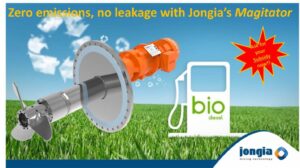
Biodiesel blending with zero leakage!
Fuel blending is a critical component of biodiesel production. A properly blended fuel can increase energy efficiency, reduce emissions and improve performance. However, it can be difficult to achieve consistent fuel quality during blending due to differences in storage tanks,




